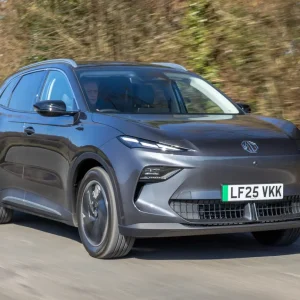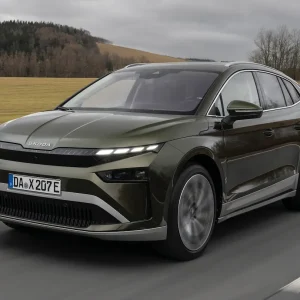The cheapest petrol-electric hybrid yet, the new Honda Insight is aimed at finally offering a green alternative to the corporate masses currently driving a Ford Focus or VW Golf.
Prices will be announced in early March but expect them to come in at around £15,500, with the top-spec ES-T costing about £17,000 and coming well-specced with satnav and Bluetooth among the standard kit.
The UK will be Europe’s biggest Insight market, with approximately 8000 cars earmarked for here during 2009. Almost two-thirds of that figure will be aimed at the corporate sector where the car falls into the 10% BIK band as a petrol model below 120g/km. That’s 3% below the diesel-powered low-CO2 offerings from rival brands.
Although the ES-T driven here is rated at 61.4mpg and 105g/km, opt for the entry-level SE, and the smaller standard wheels drop emissions to 101g/km and increase economy to 64.2mpg. It’s a shame, though, Honda couldn’t get the SE below 100g/km, especially with Toyota‘s bigger, more powerful and pricier Prius reportedly aiming for as low as 90g/km.
Honda claims, however, that real-world consumption will be nearer the so-called laboratory figures than any other car. This will be achieved, at least partly, by the driver, as the Insight offers unparalleled levels of feedback on how economically they are driving, including a series of five flowers displayed on the dash that shed or grow leaves, and the housing of the digital speedo that changes from blue to green.
There’s an Econ button, too, which limits the power and remaps the throttle, auto gearbox, cruise control and aircon systems for a greater focus on economy. It blunts performance, however, with the car noticeably less rapid when pulling away, but could be a neat trick for slow-moving traffic when acceleration isn’t required.
Despite it driving like a conventional auto, it’s worth noting that even when the Econ button isn’t employed the 1.3-litre engine feels as if it’s working very hard to pull the car along under acceleration. Also, the ride quality, certainly on our Spanish test route, is hard, but we’ll reserve our definitive verdict until we test the car in the UK.
There’s also a couple of more flawed elements from Honda’s other models. Firstly, there’s the two-part rear window from the Civic: the metal dividers between the panes block the view of following cars. Secondly, the steering suffers from the same odd grooved sensation slightly either side of straight ahead that afflicts the Accord, and too much pressure pushing the wheel to self-centre when you’re holding it at a small angle, such as on long sweeping motorway bends.
But there’s no denying the practicality. Honda claims boot space that beats the Golf or Ford, and unlike the Civic IMA hybrid, the Insight’s rear seats fold to offer a maximum of over 1000 litres.
Honda hasn’t quite succeeded in its aim to make it a hybrid that acts like any other car, and you wouldn’t choose it against standard diesel competition in pure driving terms alone, but factor in the running costs and green credentials and the appeal of the cheapest hybrid in the UK is undeniable.
|
||||||||||||||||||||||||||||||





